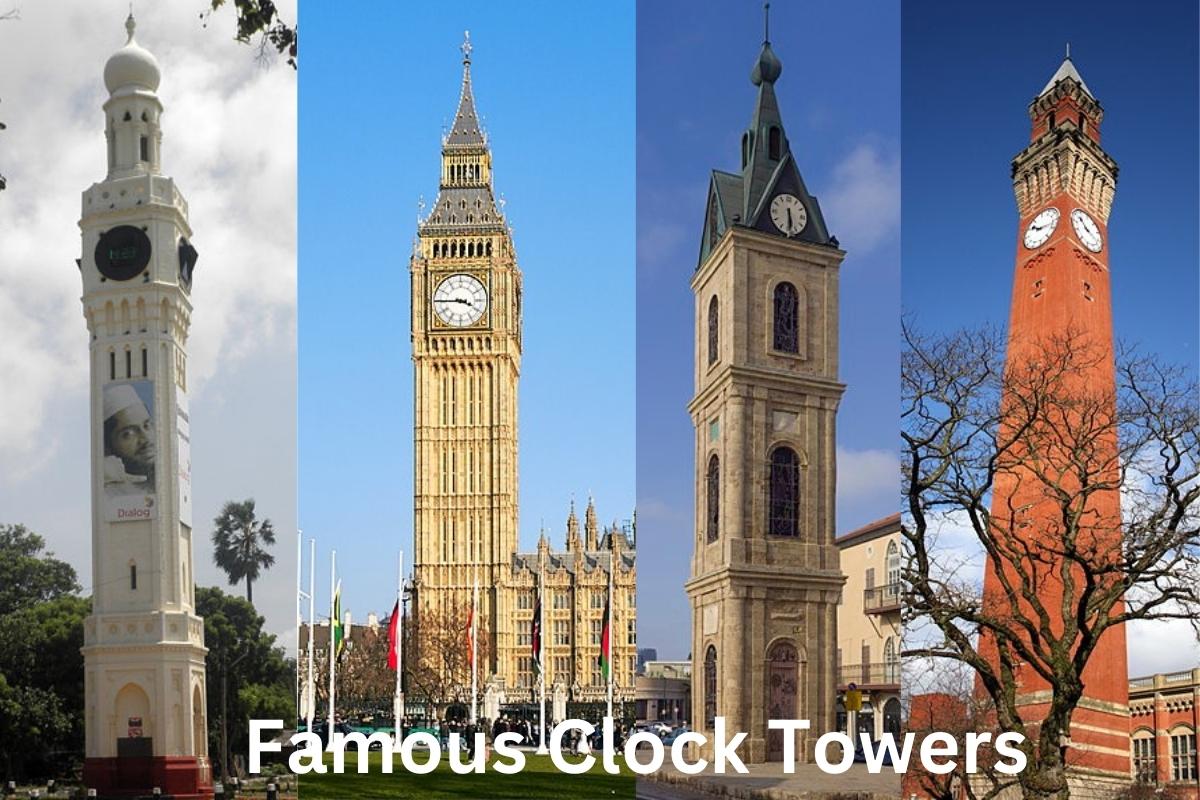There is a unique category of buildings known as “clock towers” that are distinguished by the presence of a turret clock and one or several clock faces on the outermost floors of the tower’s higher levels.
Clock towers can be either standalone constructions or attached to another structure. Here are some of the most famous clock towers that you should visit on your world travels.
Famous Clock Towers
1. Big Ben Tower Clock

Originally referring to the clock’s Great Bell, the name “Big Ben” has come to be used for the impressive clock that sits at the northern end of London’s Palace of Westminster.
After the Diamond Jubilee celebrations for Queen Elizabeth II in 2012, the Clock Tower, which houses Big Ben, was renamed the Elizabeth Tower.
The neo-Gothic architect Augustus Pugin was responsible for the tower’s design. By the time it was finished in 1859, the clock had earned its reputation as the largest and most accurate four-faced, stunning and chiming clock in the world. There are a total of 334 steps that go up the tower’s 316 feet (96 m) to the bell room.
The tower serves as an internationally known representation of British heritage. Grade I status for the clock tower dates back to 1970, and it has been part of a UNESCO World Heritage Site since 1987. Between 2017 and 2022, maintenance was done on the clock.
2. Peace Tower
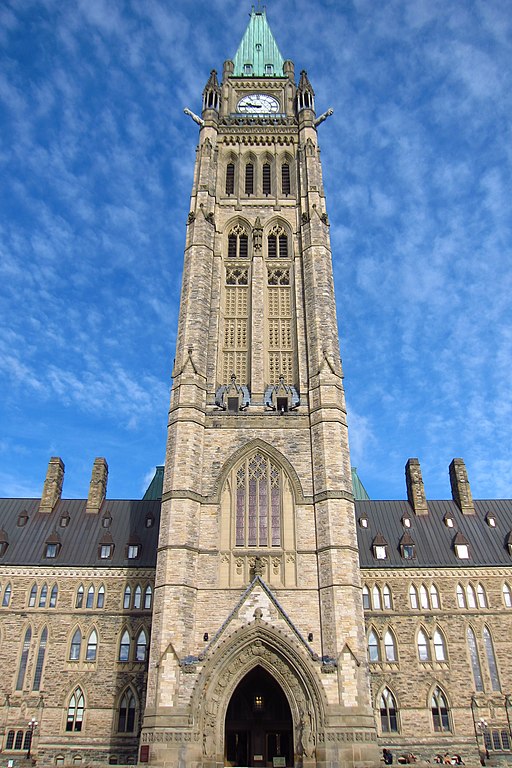
The Canadian parliament buildings in Ottawa, Ontario, feature a bell and clock tower known as the Tour de la Paix ( “Peace Tower”), which is on the center axis of the Centre Block.
After a fire in 1916 destroyed the 55-meter Victoria Tower and the majority of the Centre Block, leaving just the Library of Parliament standing, the current structure was constructed in its stead.
Before the Canadian twenty-dollar bill was switched from paper to polymer, it was prominently displayed on the currency as a national symbol. The tower, which was developed by Jean Omer Marchand as well as John A. Pearson, is a campanile that stands at a lofty 92.2 m in height.
Over that, in line with the Victorian High Gothic style of the remaining parliamentary building, are grouped numerous stone carvings, comprising friezes, grotesques, and roughly 370 gargoyles. Nepean sandstone was used for the walls, while reinforced concrete and copper were used for the roof.
3. Zytglogge
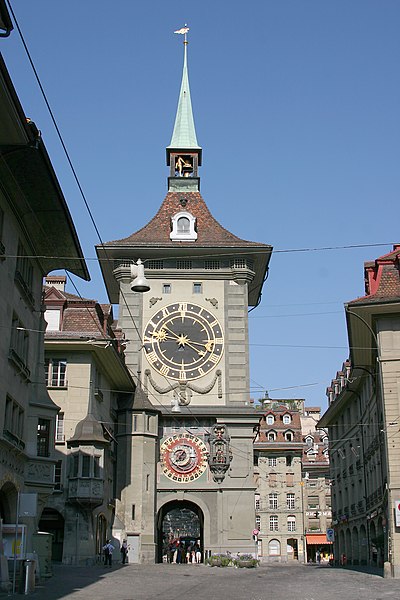
The Zytglogge tower in Bern, Switzerland, has been a local landmark since the Middle Ages. It was constructed in the early thirteenth century and has since served as a watchtower, urban epicenter, clocktower, prison, and civic memorial.
The Zytglogge has been one of Bern’s most recognizable landmarks for the past 800 years, despite countless renovations and refurbishments.
With its 15th-century celestial clock, it is also the city’s oldest landmark and a popular destination for visitors. In addition to being a section of the Old City of Bern, which is on the UNESCO World Heritage List, this landmark is of national importance.
4. Ottoman Clock Tower
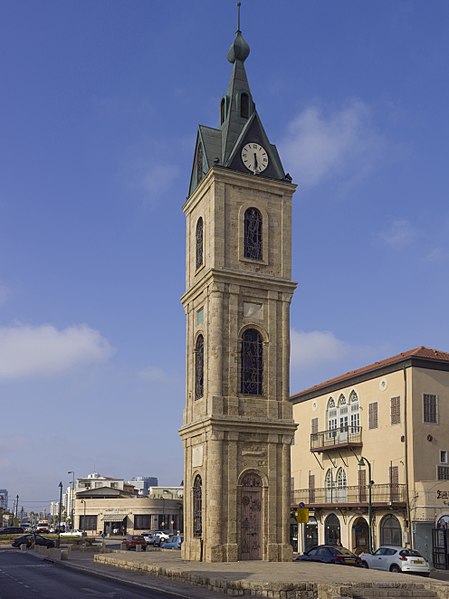
The clock tower in Jaffa’s central square first opened to the public in 1901.
Jaffa’s clock tower is one of seven constructed in Israel and one hundred constructed across the Ottoman Empire to mark the silver jubilee of the accession of Abdul Hamid, a Turkish Sultan who was second to the throne.
The sultan ordered the construction of the towers as part of his progressive reforms, to regulate city life across his dominion according to precise Western time zones. Legend has it that the tower was commissioned by Yossef Moial, a rich Jew from Jaffa.
To avoid being bothered by people passing by his shop on their way to the railway station, he built a clock tower. Two clocks in the tower display European time and two others display Israeli time.
5. Koch Memorial Clock Tower
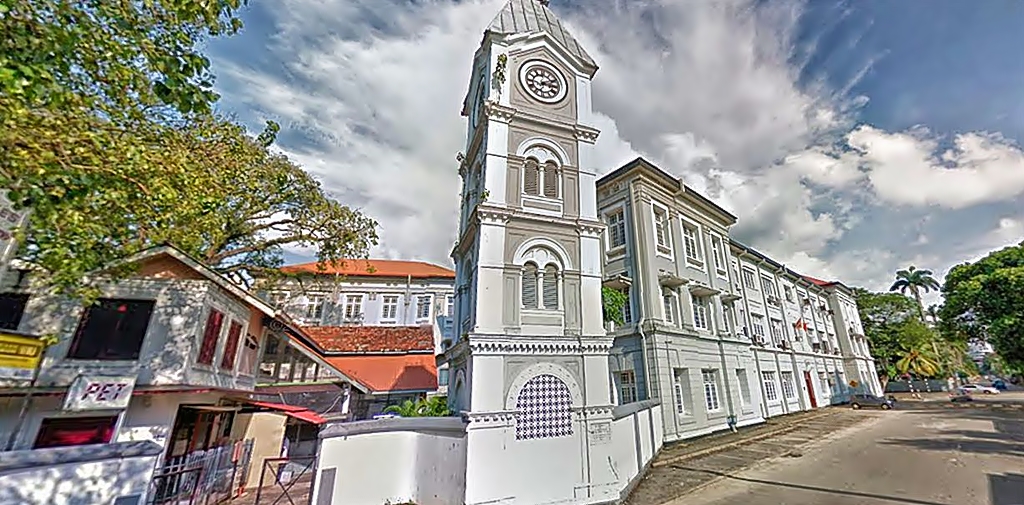
Colombo’s Koch Memorial Clock Tower can be found on Kynsey Road, next to the University of Colombo’s School of Medicine. In 1881, it was constructed as a tribute to Dr. E. L. Koch (1838-1877), the school’s second principal. It occupies a prime location across from Sri Lanka’s main hospital.
In the wake of Koch’s passing, Dr. J. L. Vanderstraaten ( another lecturer at the Medical School) spearheaded a public fundraising campaign to raise Rs 3,000 for the construction of a clock tower; the clock itself, valued at Rs. 5,000, was donated by the government on behalf of Sir James Longden.
“In remembrance of E. L. Koch, M.D. Principal Medical College Erected by Public Subscription and Civic Medical Officers 1881” is inscribed on a plaque atop the clock tower.
6. Jaffna Clock Tower
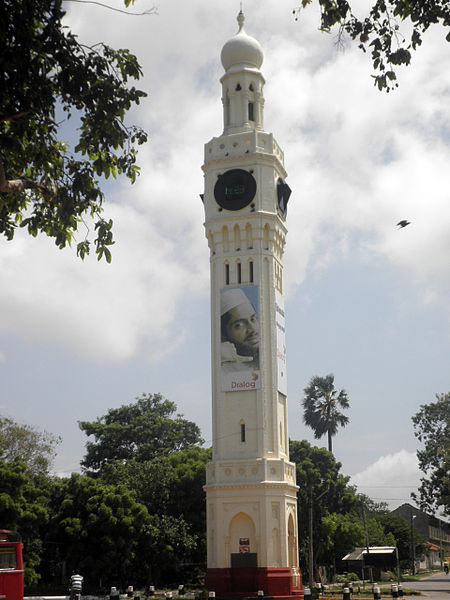
The Jaffna Clock Tower may be seen in the northern Sri Lankan city of Jaffna. It’s a well-known landmark in the area.
The structure was erected in 1875 to honor Albert Edward, Prince of Wales, who had previously visited Ceylon. A committee was organized after it was revealed that the Prince of Wales would be visiting Ceylon in 1875.
They purchased him unique presents and used the remaining money to construct a clock tower on the Jaffna esplanade as a lasting tribute. In addition to the tower’s initial cost of Rs. 3,000, the community pitched in an additional Rs.
The tower’s design and construction date back to 1882, when it was overseen by government architect James Smither.
In the late 1980s, the tower was severely damaged during the civil war. In 1998, on his visit to Sri Lanka, Prince Charles of Wales offered British aid in rebuilding the tower.
They gave away a million rupees from the British government. British High Commissioner Linda Duffield reopened the tower on June 19, 2002.
7. Joseph Chamberlain Memorial Clock Tower
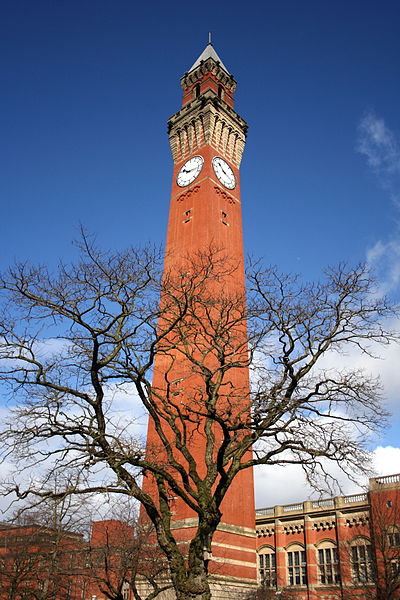
A clock and campanile known as “Old Joe,” the Joseph Chamberlain Memorial Clock Tower, may be found at the University of Birmingham’s Chancellor’s court. While its precise height is a matter of some debate, it is generally agreed that this clock tower is the tallest free-standing structure in the world.
The university claims several heights for it (361 ft, 325 ft, and 328 ft), with the latter figure being corroborated by external evidence.
Mr. C. G. Burton, the university secretary, gave a lecture in 1945 and said, “The tower stands 329 feet high; the clock dials measure 17 feet in diameter; the clock’s hands are 10 and 6 feet long, and the bell weighs 5 long tons.”
The tower serves as a tribute to the university’s first Chancellor, Joseph Chamberlain. The grade II tower is an easily recognizable symbol of Birmingham University and can be seen from far away.
8. Jubilee Clock Tower, Weymouth
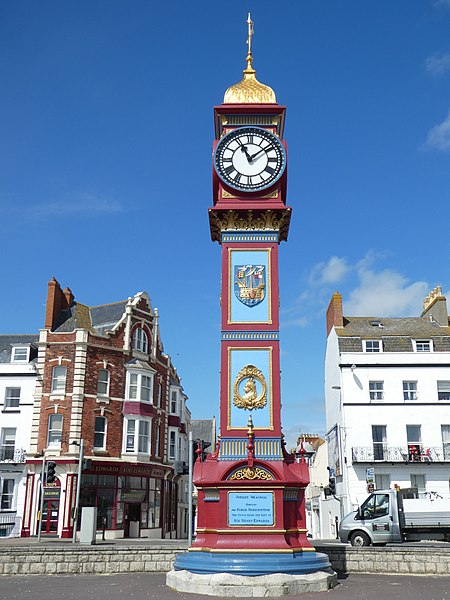
The Esplanade in Weymouth, Dorset, England is home to a freestanding clock tower known as the Jubilee Clock Tower. The structure was erected in 1887, the year that marked the half-centennial of Queen Victoria’s reign.
The tower cost £100 to build and was funded by public donations made on the occasion of ceremonies held in honor of Her Majesty the Queen on her Diamond Jubilee, 21 June 1887.
It was then that the Jubilee Committee proposed the clock tower to the council, and it was enthusiastically approved.
Because funds raised were insufficient to cover the cost of the clock directly, Sir Henry Edwards gave one, and the gas company committed to maintaining it lit at no cost to the city forever. The foundation stone was supplied by Weymouth Corporation.
On October 31, 1888, the clock tower was first shown to the public. It was built on the esplanade in front of Weymouth, jutting out somewhat onto the beach.
The esplanade was lengthened around it in the 1920s to prevent shingles from washing onto the beach from the east and to increase pedestrian space on the coastward side.
9. Secunderabad Clock Tower
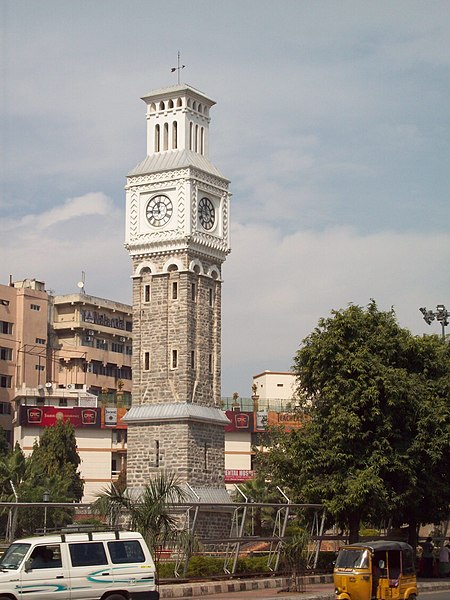
This Indian Clock Tower is an iconic structure in the Secunderabad neighborhood called Hyderabad. The 10-acre structure began construction in 1860, and it opened to the public on February 1, 1897. In 1896, a 120-foot-tall clock tower stood in the center of a park that covered 2.5 acres (1.0 ha).
On February 1, 1897, merchant Dewan Ramgopal donated the tower, which was then dedicated by Sir Trevor John Chichele Plowden, a resident. After being slated for removal in 2003, the park in which the tower is located was selected for rehabilitation in 2006.
To make room for wider highways, the park’s size was lowered to 10 million (about US$130,000). In addition, the park’s landscaping was improved with new grass, hedging, and a waterfall. Reconstruction was finally done in 2005.
Students at a local architectural school came up with the basic design for the Clock Tower.
10. Lake Town Clock Tower
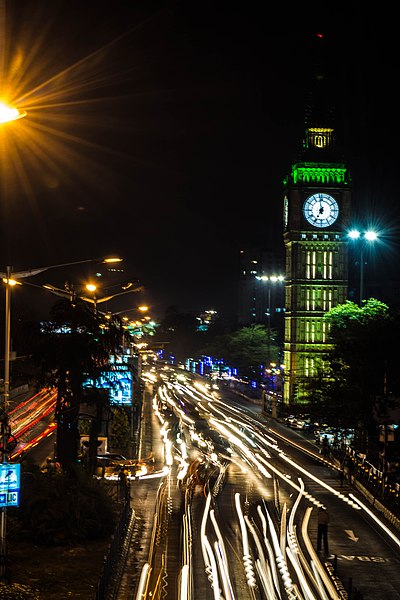
Located in the North 24 Parganas district of West Bengal, India, Lake Town is a part of the South Dumdum Municipality. It is a part of the Kolkata Metropolitan Development Authority’s jurisdiction and is located near the city of Kolkata (KMDA).
Completed in 2915, the Kolkata TimeZone Tower, located on VIP Road, is a one-third-scale model of London’s iconic Big Ben. The Chief Minister of West Bengal, Mamta Banerjee, had the tower designed to compete with London’s financial district for 1.36 billion rupees.
Cost and cultural insensitivity were two of the main reasons for the considerable neighborhood opposition that resulted in a petition being passed the door to door.
Comparatively, Big Ben in London is 96 meters tall, but this tower is only 30. It has ten stories and the Anglo-Swiss Company-sponsored clock faces are 3.6 meters in diameter instead of 7 meters.

